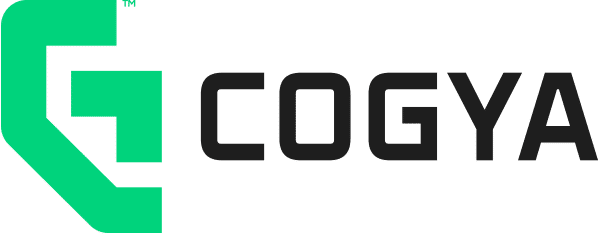The Role of User Feedback in MVP Development: Boca Raton’s Key to User-Centric Success
Introduction
In the bustling tech ecosystem of Boca Raton, the concept of Minimum Viable Product (MVP) development has gained immense popularity. Startups and established businesses alike are eager to launch innovative products and services quickly, but the key to their success lies in adopting a user-centric MVP development approach. User feedback plays a pivotal role in this process, and this article explores the importance of user feedback in MVP development, focusing on Boca Raton as a prime example of this user-centric philosophy.
Understanding MVP and Its Significance
Minimum Viable Product (MVP) is a strategy that involves developing a basic version of a product with a minimal set of features. The primary purpose of an MVP is to quickly launch the product in the market to gather real-world user data and feedback. It allows businesses to validate their ideas, learn from user interactions, and adapt to evolving market demands. In the ever-evolving tech landscape of Boca Raton, MVP development is more than a buzzword; it’s a necessity.
User-Centric MVP Development
In Boca Raton, user-centric MVP development is the driving force behind the region’s successful tech startups. These companies prioritize the needs and preferences of their target audience throughout the MVP development process. By keeping the user at the center, businesses can create products that truly resonate with their customers and provide genuine value.
User feedback in MVP development is not just an option; it’s a fundamental component of the process. Here are some reasons why user feedback is invaluable in Boca Raton’s thriving tech scene:
Local Market Insights: Boca Raton has a diverse and discerning consumer base. Gathering user feedback from local residents provides unique insights into their preferences, needs, and pain points. This knowledge is crucial for developing MVPs that cater specifically to the Boca Raton market.
Validation and Refinement: Before launching a full-scale product, an MVP allows businesses to validate their ideas. User feedback helps identify potential shortcomings and areas that need improvement. In Boca Raton, this approach ensures that tech startups launch products with a higher chance of success.
Iterative Development: User feedback encourages an iterative approach to MVP development. Boca Raton-based companies continuously improve their products based on what users have to say. This iterative cycle leads to more refined and user-friendly solutions.
Competitive Advantage: In a competitive market like Boca Raton, a user-centric MVP development approach can provide a significant advantage. Businesses that consistently gather and act on user feedback tend to outperform their competitors by delivering products that meet or exceed customer expectations.
Methods for Collecting User Feedback
In the lively tech community of Boca Raton, businesses employ various methods to collect user feedback for MVP development. Here are some effective techniques:
Surveys and Questionnaires: Boca Raton tech companies often create surveys or questionnaires that users can complete online or in-app. These surveys are designed to gather specific information about user preferences and pain points.
User Testing: User testing sessions are a common practice in Boca Raton. Users are invited to interact with the MVP, and their actions, preferences, and feedback are carefully observed and recorded.
Feedback Forms: Many MVPs incorporate feedback forms that allow users to report issues or provide suggestions directly within the product. This feature not only collects feedback but also fosters user engagement.
In-App Analytics: Boca Raton businesses use in-app analytics tools to track user behavior and gather data on how users interact with the MVP. This data can help identify bottlenecks and areas for improvement.
Social Media Listening: Keeping an eye on social media discussions and mentions of the MVP can provide valuable insights into what users like and dislike about the product.
Case Studies from Boca Raton
To better understand the impact of user feedback in MVP development, let’s explore two case studies from Boca Raton’s tech scene:
Case Study 1: BocaEats
BocaEats is a local food delivery app developed in Boca Raton. The company adopted a user-centric MVP development approach from the start. They actively sought feedback from local users to understand their preferences regarding cuisine options, delivery times, and user interface design. This feedback allowed them to make critical adjustments to their app, resulting in a more user-friendly and efficient platform. BocaEats’ emphasis on user feedback helped them gain a significant market share in the fiercely competitive food delivery industry in the area.
Case Study 2: RatonRides
RatonRides is a ridesharing service that launched in Boca Raton. By constantly collecting user feedback, they were able to identify common complaints about the reliability of drivers. In response, RatonRides implemented a driver rating system, ensuring users had more control over the quality of service they received. As a result, customer satisfaction increased, leading to a substantial increase in user retention.
Conclusion
In the tech hub of Boca Raton, user-centric MVP development is not just a trend; it’s a fundamental strategy for success. By prioritizing user feedback throughout the MVP development process, businesses in this thriving city can create products and services that truly resonate with their local market. User feedback ensures validation, refinement, and continuous improvement, setting the stage for a competitive edge in this dynamic tech ecosystem.
Boca Raton’s tech startups understand that the voice of the user is the most valuable asset in their development journey. By embracing user feedback, they don’t just build products; they build relationships with their customers, ensuring long-term success in this vibrant tech landscape. In the age of user-centric MVP development, Boca Raton shines as a prime example of how the voice of the user can be the key to unlocking innovation and growth.







